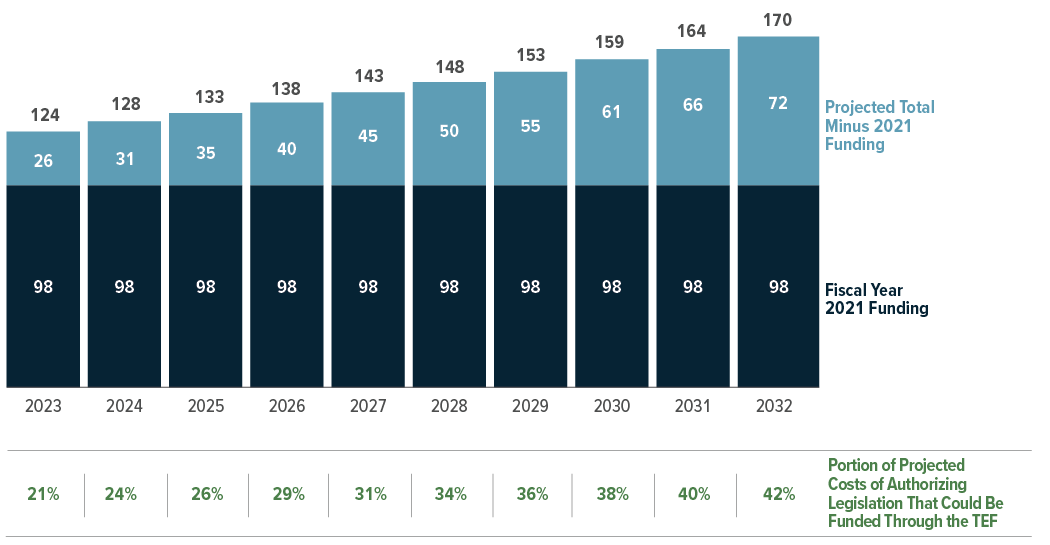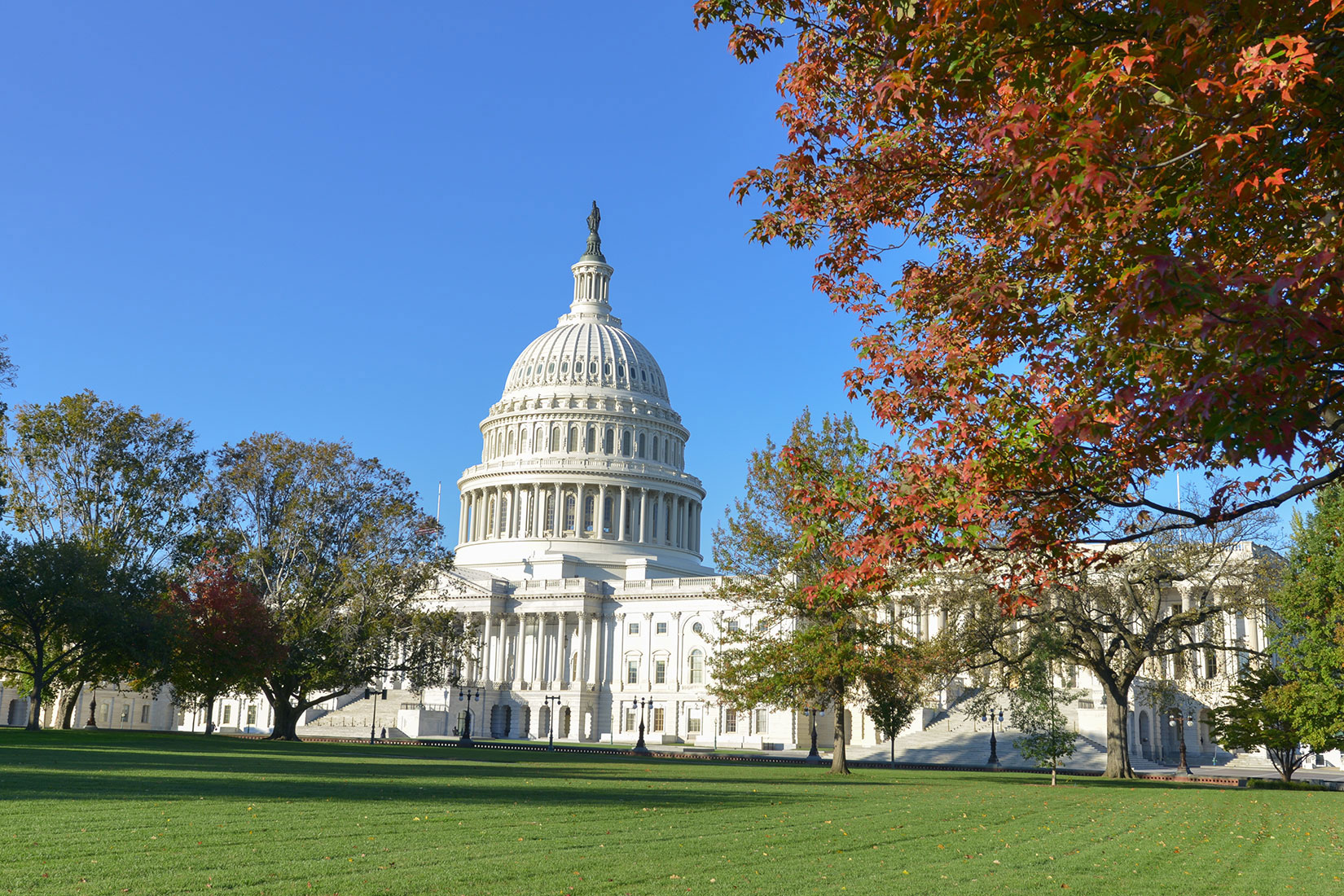Phillip L. Swagel
Director
For the Committee on Veterans’ Affairs
U.S. House of Representatives
Chairman Takano, Ranking Member Bost, and Members of the Committee, the Congressional Budget Office is pleased to provide information about how it would estimate the effects of future authorizing legislation on spending from the newly established toxic exposures fund (TEF, officially named the Cost of War Toxic Exposures Fund). In CBO’s view, some of the costs of legislation that would have previously been paid from discretionary appropriations for the Department of Veterans Affairs (VA) will now be paid in part from the TEF. As a result, CBO’s cost estimates for future legislation that would affect activities potentially covered by the fund will show effects on both discretionary authorization levels and mandatory (that is, direct) spending. CBO currently has little information about how VA will allocate costs to the TEF. In its cost estimates for future authorizing legislation affecting the fund, CBO expects to allocate, on average, about one-third of the costs to the TEF during the 2023–2032 period.
Determining Which Authorizing Legislation Would Affect Spending From the TEF
The Honoring our PACT Act of 2022 (the PACT Act, Public Law 117-168) established the TEF to provide mandatory funding for benefits for veterans who have been exposed to toxic substances or environmental hazards (sometimes referred to as toxic exposures). Administered by VA, the TEF will provide support for five kinds of activities: health care, processing disability claims, medical research, modernizing information technology (IT) programs, and other services.
Some future authorizing bills may affect the costs of those types of activities, both for veterans generally and for veterans with toxic exposures. As a result, some of those costs could now be paid in part from the TEF (thereby increasing mandatory spending) and some could be paid, as they have been previously, from discretionary appropriations (thereby increasing discretionary authorization levels). CBO would therefore include the effects of both types of payments in its cost estimates for such legislation.
For example, a bill could expand veterans’ health care programs by requiring VA to provide additional services, such as access to fertility treatments or more cancer screenings, or it could increase the amount of a current benefit, such as the payment rate for reimbursable travel to receive care at VA facilities. Before the PACT Act became law, all the costs to implement such legislation would have been paid from discretionary appropriations. But CBO expects that, under current law, some of those costs would instead be paid from the TEF because some veterans receiving services related to health care would be eligible for care because of conditions associated with toxic exposures.
As another example, a bill could require VA to modernize its IT systems to process claims for disability compensation more quickly. Before the PACT Act became law, VA’s IT activities were generally funded from discretionary appropriations. Because some of the veterans who will receive disability compensation have conditions related to toxic exposures, some of the costs for modernizing IT systems could, in CBO’s assessment, end up being paid from the TEF.
Because VA might not be able to fully separate the costs related to toxic exposures from those that are not, CBO anticipates that the department will develop a rule to allocate a portion of the costs to the TEF. Thus, when estimating the cost of legislative proposals similar to the ones in these examples, CBO will use a similar rule to proportionally allocate costs to the TEF, as explained below.
Estimating the Portion of Costs Allocated to the TEF
CBO currently has little information on which to base an estimate of the portion of the costs that would be paid from the TEF to support veterans’ health care, processing disability claims, medical research, and modernizing IT programs. The PACT Act appropriated $500 million to the fund. The Administration has requested $13.7 billion for 2023 and an advance appropriation of $18.0 billion for 2024.
Until CBO has more information about the amount of funding requested for and provided through the TEF, the agency will allocate the costs of legislation between discretionary accounts and mandatory TEF funding by using the portion of formerly discretionary spending that it estimates would be funded from the TEF on the basis of its baseline projections. CBO used that method to project the amount of funding for the TEF in its cost estimate for the PACT Act.1 For that cost estimate, the agency identified nine of VA’s budgetary accounts that fund the five activities that can now also be funded through the TEF (see Table 1). In CBO’s baseline, projected funding for those activities before the enactment of the PACT Act would have increased over time as a result of inflation.
Table 1.
VA’s Budgetary Accounts That Fund Activities Covered by the Toxic Exposures Fund
Billions of Dollars

Data source: Congressional Budget Office. See www.cbo.gov/publication/58843#data.
In CBO’s baseline projections for the 2023–2032 period, about 85 percent of the projected funding for the nine accounts is for the medical services account and the medical community care account.
VA = Department of Veterans Affairs.
a. Budget authority is the authority provided by federal law to incur financial obligations that will result in immediate or future outlays of federal government funds.
Section 805 of the PACT Act authorizes the appropriation “for fiscal year 2023 and each subsequent fiscal year such sums as are necessary to increase funding, over the fiscal year 2021 level” for health care, processing claims, research, and IT modernization associated with toxic exposures. It further states that amounts appropriated to the TEF are to be classified as direct spending in the baseline, and that no amount appropriated to the fund is to be counted as either discretionary budget authority or direct spending for any estimate of an appropriation act.
Because the PACT Act did not allow for the 2021 funding level to be adjusted for inflation, the amount that is authorized to be appropriated to the TEF is benchmarked to the increase in costs above the 2021 level. Thus, in CBO’s estimates, the starting point for determining how much can be allocated to the TEF is fixed, whereas the projected funding is likely to grow over time (see Figure 1). As a result, potential mandatory funding would increase as a percentage of total funding throughout the 10-year baseline projection period.
Figure 1.
Projected Funding for VA’s Nine Budgetary Accounts That Fund Activities Covered by the Toxic Exposures Fund
Billions of Dollars

Data source: Congressional Budget Office. See www.cbo.gov/publication/58843#data.
TEF = toxic exposures fund; VA = Department of Veterans Affairs.
To calculate that percentage, CBO projected funding levels over that period by inflating appropriations for fiscal year 2022 (or, in some cases, advance appropriations for 2023) for the nine accounts listed in Table 1. (That amount is the total shown for each year in Figure 1.) The agency then calculated the difference between those amounts and the appropriation for 2021.2 That difference, as a percentage of total projected funding for those nine accounts and for the TEF, indicates what portion of the costs of subsequent authorizing legislation could be funded through the TEF.
Using that method, CBO would allocate 21 percent of the added costs of subsequent legislation to the TEF in 2023; that amount would grow to 42 percent by 2032. Those amounts would be shown as mandatory spending in CBO’s cost estimates. The agency will update those percentages when more information is available about the actual amounts appropriated to the fund; but estimated costs will not be limited to the amounts appropriated and available in the fund at the time the estimates are prepared. The percentages may also change when CBO updates its baseline projections each year.
1. Congressional Budget Office, cost estimate for H.R. 3967, the Honoring our PACT Act of 2021, as amended by the Senate Committee on Veterans’ Affairs (June 6, 2022), www.cbo.gov/publication/58177.
2. When CBO prepared its cost estimate for H.R. 3697 (dated June 6, 2022), the agency concluded that some of the offsetting receipts deposited into the medical care collections fund could instead be credited to the TEF. The amounts in that estimate included the effects of those collections. After further consideration, CBO concluded that none of those collections can be credited to the TEF under current law. The amounts shown in Figure 1 reflect that change.
This statement describes how the Congressional Budget Office would estimate how much of the costs of future authorizing legislation may be allocated to the toxic exposures fund administered by the Department of Veterans Affairs. In keeping with CBO’s mandate to provide objective, impartial analysis, the statement makes no recommendations.
Christopher Mann and Logan Smith prepared the statement with guidance from Theresa Gullo, Leo Lex, and David Newman.
Mark Doms, Mark Hadley, Jeffrey Kling, and Robert Sunshine reviewed the statement. Scott Craver edited it, and Jorge Salazar created the graphics and prepared the text for publication. The statement is available at www.cbo.gov/publication/58843.
CBO seeks feedback to make its work as useful as possible. Please send comments to communications@cbo.gov.

Phillip L. Swagel
Director


